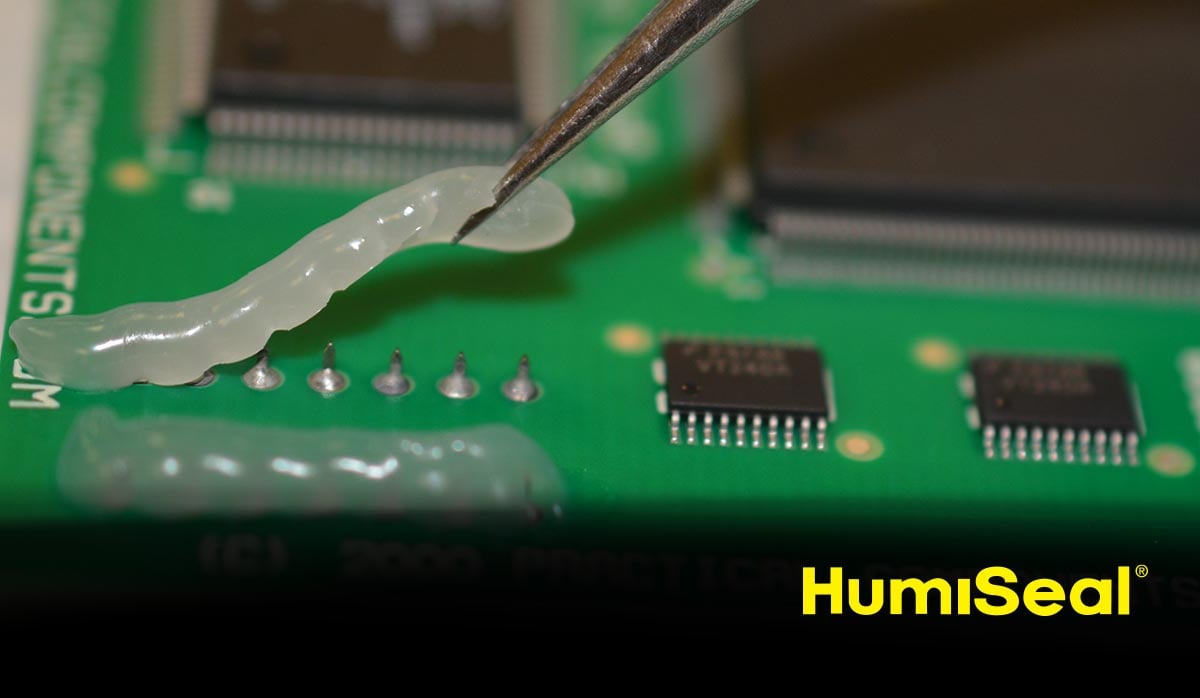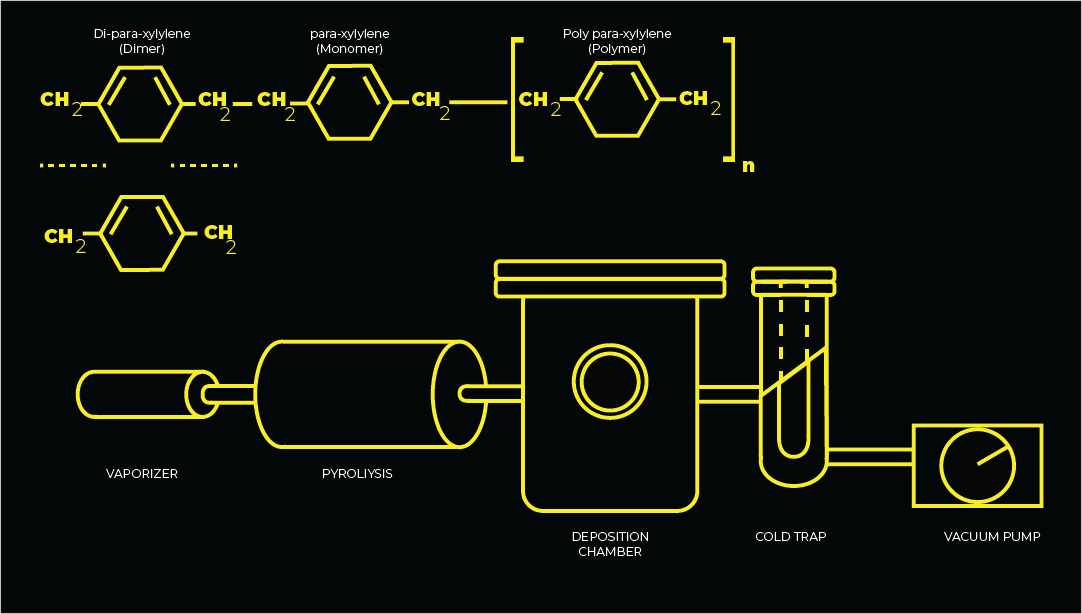 Conformal coating with parylene is a very different process compared to coating with traditional solvent-borne or UV curable materials. Parylene coating has some advantages including
Conformal coating with parylene is a very different process compared to coating with traditional solvent-borne or UV curable materials. Parylene coating has some advantages including
- a very thin application profile,
- uniform and complete surface coverage, and
- generally excellent protection and minimal outgassing potential.
On the other hand, parylene coating also presents unique challenges such as
- a significant investment in complex equipment,
- batch processes that limit productivity and increases costs, and
- the user’s inability to selectively control where the coating is applied.
It is this final challenge that we will concern ourselves with within the following discussion.
Why does the parylene process require protective masking?

The use of parylene is a specialized and often expensive method to protect PCBs. A simple schematic of the basic process is shown above. The “deposition chamber” in the drawing is where PCBs are placed to be coated. The parylene is vaporized in a near-vacuum, and the vessels including the deposition chamber must be closed, resulting in a batch process.
Unlike traditional conformal coatings using selective application equipment, the vaporized parylene coating process will deposit the polymer evenly across all exposed surfaces. As a result, it is necessary to completely mask and protect any sensitive surfaces or devices that will be affected negatively by the presence of parylene on their surfaces.
What are the surfaces or components that may require protective masking?
On nearly all printed circuit boards, there are components and sections where conformal coating would not be acceptable. It is probably not necessary to discuss in detail all of the various reasons, but the most common areas that shouldn’t be coated include
- connectors, test sites, and pins where electrical continuity must be maintained;
- sensitive or unsealed components, such as open inductors or relays;
- large through-holes or “vias” where coating would leak through;
- LED surfaces if the light output is affected by coating; and
- in some cases, certain integrated circuit packages, such as BGAs and QFNs, if wicking under the component is unacceptable.
Related article: Masking Before Conformal Coating My PCB: What Are My Options?
How can HumiSeal® UV92 help with masking for parylene applications?
Chase Corporation and our HumiSeal brand have been the industry leader in PCB protection for over five decades. In addition to developing conformal coatings, our polymer scientists have used their extensive understanding of the industry to create ancillary products including masking compounds.
Due to the high cost and typically high value of parylene-coated PCBs, it has been recognized that an effective form of masking can be of great value. UV curable temporary masking liquid UV92 was developed as a highly efficient, fast curing, and protective masking material suitable for all processes including parylene. UV92 can be applied by hand or in automated dispensing equipment for higher volume operations.
Properties of HumiSeal® UV92
| Specific Gravity at 25°C | 1.04 |
| Viscosity | Thixotropic paste |
| Appearance | Milky white |
| Chemical Class | Urethane acrylate |
| Shelf Life, DOM | 12 months, stored at 18 +/-10 °C |
| Recommended Curing Conditions | UV-LED at 365nm or 405nm “H” type microwave or arc lamp (minimum power of 200 mW/cm2) |
| Cleanup Solvent | Isopropyl alcohol |
| Glass Transition Temperature (Tg) | -50 °C |
| Hardness | 40 Shore A |
| Elongation at Break | > 200 % |
| Operating Temperature Range | -50 to 150 °C |
Video📹: Benefits of UV92 Curable Masking Gel
UV92 can be especially efficient and effective in avoiding wicking and migration of conformal coatings under integrated circuit packages such as BGAs and QFNs. As clearances and tolerances shrink beneath IC packages, differences in expansion characteristics between coatings and surfaces make wicking and migration even more undesirable.
The use of masking liquids and permanent gels can avoid many of the problems associated with these cases.
As a supplier of electronics protection polymers and coatings, Chase Corporation and our employees can help you with an unbiased approach to evaluating your application and process. We’ll show you how to maximize efficiency, minimize cost, and improve product reliability. Our outstanding manufacturing and technical support groups can provide your organization with reliable global supply, unmatched quality, and superior technical support.
Please contact us today to discuss your application









